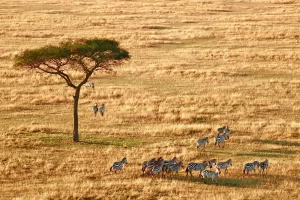
Serengeti National Park
The focus of most safaris in northern Tanzania, Serengeti National Park is renowned as the arena for the world’s greatest mammal migration.
Tanzania is one of the most fabulous destinations for all kinds of travelers. Whether you are adventuring with your companions or having a family vacation, Tanzania offers abundant tourism objects that you can treasure as a beautiful memory.
From the great migration of the Serengeti to the more remote parks, a Tanzania safari offers superb game viewing in a dramatic setting of snowy peaks, volcanic craters, and the Masai steppe of endless plains. Tanzania is renowned for its sheer numbers of wildlife.
There are lots of big cats and hordes of wildebeest, zebra, and Thompson’s gazelle that migrate across the grasslands every year, with dramatic river crossings along the path of this Great Migration in Serengeti Plain. safari, history, culture, local delicacies, accommodations, games, and white sand beaches, the country is blessed with varied habitats, including high mountains (Mout Kilimanjaro (5.895 m), the highest free-standing mountain in the world),
The seas, rivers, lakes, forests, tropical islands (Zanzibar, Pemba, Mafia, Mnemba, etc.), beaches in Zanzibar, craters, plains, and nature reserves. It is undeniable that Tanzania offers beautiful, unique, and genuine experiences to all visitors.
Experience the best Tanzania has to offer in six must-see conservation areas of the north, either in a small group or on a private guided safari. The northern tourism circuit is by far the most popular safari circuit in Tanzania, comprising most of the must-see destinations in the country. If you’re a first-time visitor to Tanzania, this is where you want to be.
The circuit starts in Arusha and includes, from east to west: Arusha National Park at the foot of Mount Meru, Tarangire National Park 110km southwest of the town of Arusha, Manyara Ranch between Tarangire National Park and Lake Manyara National Park, Lake Manyara National Park at the bottom of the Gregory Rift, the Ngorongoro Conservation Area (which includes the Ngorongoro caldera, the Empakaai Crater, and the southern Serengeti plains of Lake Ndutu), and the Serengeti National Park that stretches north to the Tanzania/Kenya border.
For hikers, climbing Mt. Kilimanjaro or the crater of Mt. Meru is an adventurous break from game viewing. A longer trek through the Crater Highlands is also a beautiful way to explore northern Tanzania at a leisurely pace. Day-trips from Arusha to Mt. Meru and the Momela Lakes, located in Arusha National Park, incorporate short forest hikes and canoeing trips as a break from standard vehicle game drives.

The focus of most safaris in northern Tanzania, Serengeti National Park is renowned as the arena for the world’s greatest mammal migration.
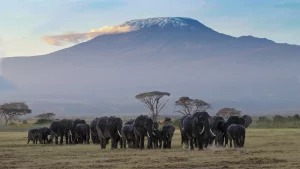
Kilimanjaro National Park is a national park in Tanzania that plays host to many species of wildlife as well as being home to the more popular Mount Kilimanjaro
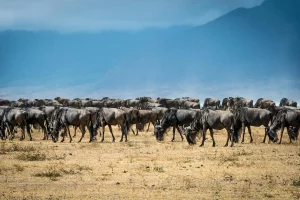
A visit to the Ngorongoro Crater is an experience of a lifetime. As the world’s only intact caldera
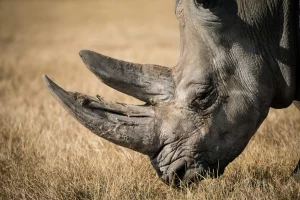
Far away from any crowds, Mkomazi National Park feels wild and untrammeled.
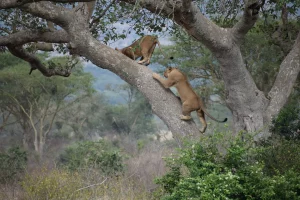
Lake Manyara National Park is dominated by a shallow, alkaline lake at the base of the Rift Valley escarpment.
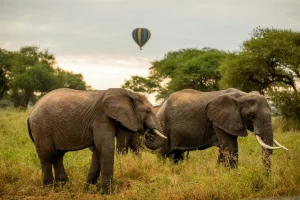
Tarangire National Park is most famous for its dense population of elephants.
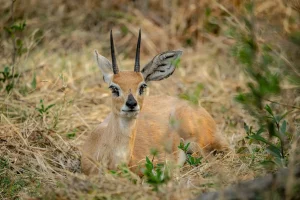
Arusha National Park is dominated by Mt. Meru (4,562 m/14,967 ft), Tanzania’s second-highest peak after Mt. Kilimanjaro.
The southern parks present a wide range of experiences, from savannahs to wetlands, walking safaris to river experiences. The south of Tanzania is mostly a destination for second-time visitors. The south can also be combined with the Serengeti in the north or linked with the west if time and budget allow. The southern circuit includes parks and reserves that can be visited using Dar es Salaam as a starting point.
There’s Saadani National Park north of Dar, then two hours to the west, the little park of Mikumi on both sides of the highway that meanders down to Iringa and Mbeya and eventually to Zambia or northern Malawi.
The Nyerere National Park (former Selous Game Reserve) to the south of Mikumi is great for river experiences on the Rufiji River and also for walking safaris. Udzungwa Mountains National Park is all about forests, waterfalls, and weird endemics, while Ruaha National Park, just west of Iringa, is the gem of the southern circuit.
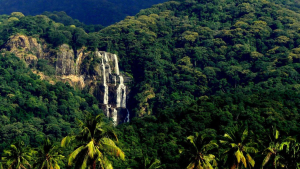
The Udzungwa Mountains National Park is a Tanzanian national park in Kilolo District of Iringa Region and Kilombero District of Morogoro Region
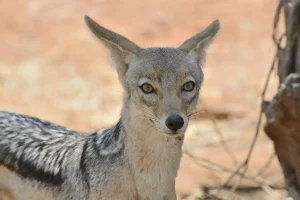
Ruaha National Park is a favorite safari destination for many African aficionados. And that is for good reason
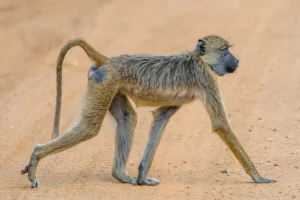
The bush meets the beach in Saadani National Park. Thanks to its long Indian Ocean beachfront, this is the one place in East Africa
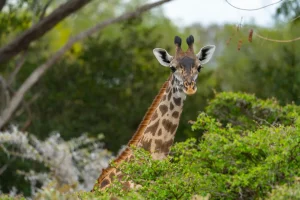
Nyerere National Park (formerly Selous Game Reserve) is Tanzania’s largest national park.
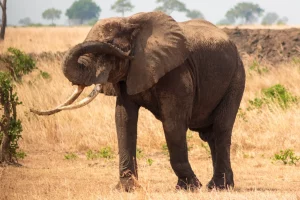
Underrated Mikumi National Park is known for its open horizons and abundant wildlife, especially across the Serengeti-like expanses of the Mkata Floodplain.
The southern parks present a wide range of experiences, from savannahs to wetlands, walking safaris to river experiences. The south of Tanzania is mostly a destination for second-time visitors. The south can also be combined with the Serengeti in the north or linked with the west if time and budget allow. The southern circuit includes parks and reserves that can be visited using Dar es Salaam as a starting point.
There’s Saadani National Park north of Dar, then two hours to the west, the little park of Mikumi on both sides of the highway that meanders down to Iringa and Mbeya and eventually to Zambia or northern Malawi.
The Nyerere National Park (former Selous Game Reserve) to the south of Mikumi is great for river experiences on the Rufiji River and also for walking safaris. Udzungwa Mountains National Park is all about forests, waterfalls, and weird endemics, while Ruaha National Park, just west of Iringa, is the gem of the southern circuit.
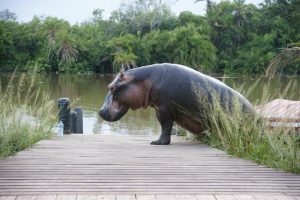
Covered in pristine rainforest, Rubondo Island National Park is a unique eco-destination
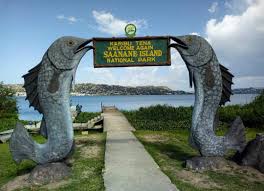
Saanane Island National Park is located on the island of Saanane. In Mwanza, Tanzania, there is a national park.
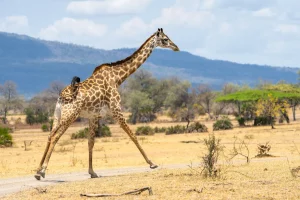
One of the main draws of this national park is the third-largest lake in the nation.
Come here to see chimpanzees and experience natural locations that are off the beaten track. The Western Circuit embraces the parks along Lake Tanganyika, the western border of Tanzania with the Democratic Republic of the Congo (DRC).
The vast space in a remote, natural location makes the circuit worth a visit. Gombe Stream National Park was made famous by Jane Goodall’s research on its chimpanzee population and subsequent habituation. Mahale Mountains National Park further south, on the shores of the gin-clear waters of Lake Tanganyika, is a more authentic chimpanzee experience and highly recommended.
You’ll have to go further to find the chimps, but you’ll get a better idea of how chimps are in the wild than by observing them in feeding pens. Katavi National Park is another 150km towards the south-east of Mahale and probably gets fewer than 500 tourists a year.
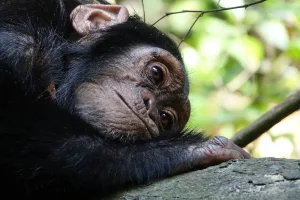
Set on the shore of scenic Lake Tanganyika, forested Gombe National Park is one of the best places in Africa to track chimpanzees.
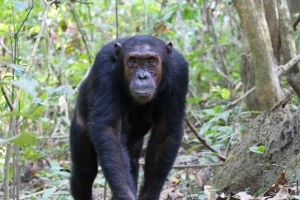
Chimpanzees are the star attraction of Mahale Mountains National Park. The forests of this mountainous park are home to 900 chimps
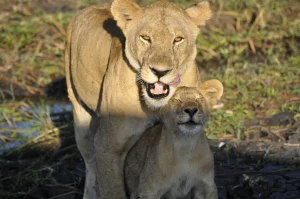
Katavi National Park is pure wilderness. Few parks anywhere in Africa offer such a tantalizing combination of breathtaking wildlife viewing
The beaches in Tanzania are among the most stunning in the world, and there are wonderful diving, fishing, and cultural opportunities there. Zanzibar, Pemba, and Mafia are a few of the coastal towns and islands in Tanzania.
Tanzania is known for its fantastic 800 km of coastline, which features white sand beaches with palm trees lining them, as well as the historic towns of Dar es Salaam, Bagamoyo, Kilwa, Lindi, Mikindani, and Mtwara, as well as the exotic islands of Zanzibar, Pemba, and Mafia.
The Indian Ocean coast is where the Swahili language and culture originated. Along this historically rich coastline, numerous explorers, sultans, and slave traders encountered Africa for the first time and helped shape events that would define modern Tanzania.
The Zanzibar Archipelago islands served as major stepping stones for the culture that would shape Tanzanian people and language. Due to Zanzibar’s popularity as a standalone destination as well as a safari, beach vacation, or honeymoon destination, it has been covered separately.
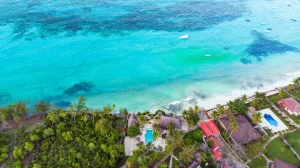
The beaches in Tanzania are among the most stunning in the world, and there are wonderful diving, fishing, and cultural opportunities there.
Stay up-to-date with the latest news, special offers, and insider tips from About Tanzania Safari by subscribing to our newsletter. Don’t miss out on exclusive deals and exciting safari experiences! Enter your email address below to join our mailing list:
+255 784 778 194
+255 752 918 477
marketing@abouttanzaniasafaris.com